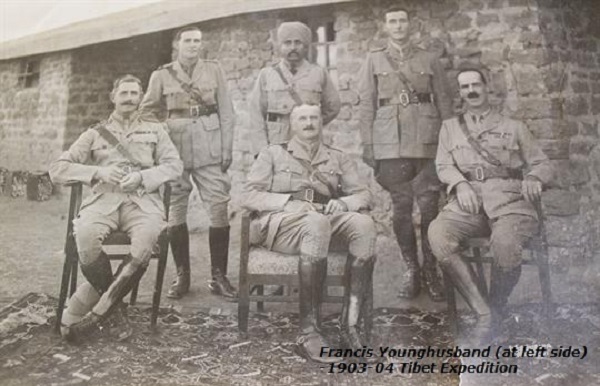
- Modern Indian History Tutorial
- Modern Indian History - Home
- Decline of Mughal Empire
- Bahadur Shah I
- Jahandar Shah
- Farrukh Siyar
- Muhammad Shah
- Nadir Shah’s Outbreak
- Ahmed Shah Abdali
- Causes of Decline of Mughal Empire
- South Indian States in 18th Century
- North Indian States in 18th Century
- Maratha Power
- Economic Conditions in 18th Century
- Social Conditions in 18th Century
- Status of Women
- Arts and Paintings
- Social Life
- The Beginnings of European Trade
- The Portuguese
- The Dutch
- The English
- East India Company (1600-1744)
- Internal Organization of Company
- Anglo-French Struggle in South India
- The British Conquest of India
- Mysore Conquest
- Lord Wellesley (1798-1805)
- Lord Hastings
- Consolidation of British Power
- Lord Dalhousie (1848-1856)
- British Administrative Policy
- British Economic Policies
- Transport and Communication
- Land Revenue Policy
- Administrative Structure
- Judicial Organization
- Social and cultural Policy
- Social and Cultural Awakening
- The Revolt of 1857
- Major Causes of 1857 Revolt
- Diffusion of 1857 Revolt
- Centers of 1857 Revolt
- Outcome of 1857 Revolt
- Criticism of 1857 Revolt
- Administrative Changes After 1858
- Provincial Administration
- Local Bodies
- Change in Army
- Public Service
- Relations with Princely States
- Administrative Policies
- Extreme Backward Social Services
- India & Her Neighbors
- Relation with Nepal
- Relation with Burma
- Relation with Afghanistan
- Relation with Tibet
- Relation with Sikkim
- Relation with Bhutan
- Economic Impact of British Rule
- Nationalist Movement (1858-1905)
- Predecessors of INC
- Indian National Congress
- INC & Reforms
- Religious & Social Reforms
- Religious Reformers
- Women’s Emancipation
- Struggle Against Caste
- Nationalist Movement (1905-1918)
- Partition of Bengal
- Indian National Congress (1905-1914)
- Muslim & Growth Communalism
- Home Rule Leagues
- Struggle for Swaraj
- Gandhi Assumes Leadership
- Jallianwalla Bagh Massacre
- Khilafat & Non-Cooperation
- Second Non-Cooperation Movement
- Civil Disobedience Movement II
- Government of India Act (1935)
- Growth of Socialist Ideas
- National Movement World War II
- Post-War Struggle
- Clement Attlee’s Declaration
- Reference & Disclaimer
Modern Indian History - Relation with Tibet
Tibet lies to the north of India where the Himalayan peaks separate it from India. It was ruled by a Buddhist religious aristocracy (the Lamas) who had reduced the local population to serfdom and even slavery.
The chief political authority was exercised by the Dalai Lama, who claimed to be the living incarnation of the power of the Buddha.
The lamas wanted to isolate Tibet from the rest of the world; however, since the beginning of the 17th century, Tibet had recognized the nominal suzerainty of the Chinese Empire.
The Chinese Government also discouraged contacts with India though a limited trade and some pilgrim traffic between India and Tibet existed.
The Chinese Empire under the Manchu monarchy entered a period of decline during the 19th century. Gradually, Britain, France, Russia, Germany, Japan, and the United States of America penetrated China commercially and politically and established indirect political control over the Manchus.
The Chinese people also created a powerful anti-Manchu and anti-imperialist nationalist movement at the end of the 19th century and the Manchus were overthrown 'in 1911.
But the nationalists led by Dr. Sun Yat Sen failed to consolidate their power and China was torn by civil war during the next few years.
The result was that, China, since the middle of the 19th century, was in no position to assert even nominal control over Tibet. The Tibetan authorities still acknowledged in theory Chinese over lordship so that other foreign powers would not feel tempted to penetrate Tibet. But Tibet was not able to maintain its complete isolation for long.
Both Britain and Russia were keen to promote relations with Tibet. The British policy towards Tibet was governed by both economic and political considerations.
Economically, the British wanted to develop lndo-Tibetan trade and to exploit its rich mineral resources.
Politically, the British wanted to safeguard the northern frontier of India. But up to the end of the 19th century, the Tibetan authorities blocked all British efforts to penetrate it.
At this time, Russian ambitions also turned towards Tibet. Russian influence in Tibet was on the increase, this the British Government would not tolerate.
The Government of India, under Load Curzon, a vigorous empire builder, decided to take immediate action to counter Russian moves and to bring Tibet under its system of protected Border States.
According to some historians, the Russian danger was not real and was merely used as an excuse by Curzon to intervene in Tibet.
In March 1904, Curzon dispatched a military expedition to Lhasa, the Capital of Tibet, under Francis Younghusband.

The virtually unarmed Tibetans, who lacked modern weapons, fought back bravely but without success.
In August 1904, the expedition reached Lhasa without coming across any Russians on the way. A treaty was signed after prolonged negotiations.
Tibet had to pay Rs. 25 lakhs as indemnity; the Chumbi valley was to be occupied by the British for three years; a British trade mission was to be stationed at Gyantse.
The British agreed not to interfere in Tibet's internal affairs. On their part, the Tibetans agreed not to admit the representatives of any foreign power into Tibet.
The British achieved very little by the Tibetan expedition. It secured Russia's withdrawal from Tibet, but at the cost of confirming Chinese suzerainty.